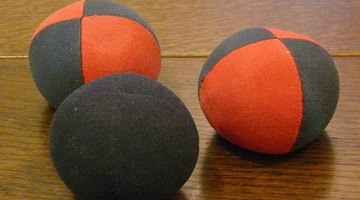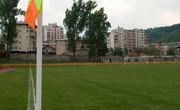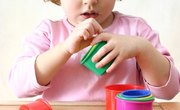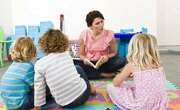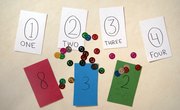What are Limited Space Physical Education Activities?
It is possible to hold PE lessons even in a small space like a classroom or cafeteria. Classrooms can be turned into mini-gyms by moving furniture against the walls and placing a few mats in the middle of the room. Even simpler, children can exercise by getting creative with whatever space you have. Limited space PE activities are particularly good for a mini-break from studying--a chance for children to work off some steam so they can settle down. These activities will be up to the physical education teachers, but the physical education students could also help determine what activities to perform in a limited space setting.
Physical activity like jumping jacks, hula hooping, jump ropes and other PE games or activity ideas involving teamwork and PE teachers could be great if used in limited space areas. Other PE games like dodgeball, finish line, balance beam, relay races or games with bean bag tossing would probably not be best if used in a small space. You could include some games or activities that include small groups of students, or these activities can be done for everyone collectively in the class.
Examples of Limited Space Physical Education Activities
1. Charades
Write down a series of sports moves or actions on note cards, such as hitting a tennis ball, sliding into base, ice skating or kicking a goal in soccer. Divide children into groups and have one child come to the front of the room. Hand her the first card and have her act out the action on the card. The other children need to guess what sport is being acted out. You can vary this by having different children act out a series of movements from a particular sport, such as dribbling a basketball, passing a basketball and shooting a hoop.
2. Giant Twister
Twister is fun, and also helps children to become more limber and can build stamina. You can make your own giant twister game by painting or drawing spots on a large sheet. Write the actions on note cards and chose them from a hat, one at a time. In addition to placing parts of the body on a particular color, you can add other actions, such as clap your hands, or hop on one foot. Have the children come up in groups to play.
3. Follow the Leader
Students form a circle, facing in. One person is picked to start. This person makes a movement of some kind, such as hopping on one foot two times. Everyone in the circle must repeat this movement. The second person in line then makes the first movement, and adds a movement of their own. Everyone in the circle must then repeat both movements. This continues until someone makes a mistake or forgets a movement. That person is then out. The game continues until there is a winner.
4. Juggling
Juggling is very good for promoting eye-hand coordination. Students could even make their own juggling materials by cutting the toes off old socks, filling them with rice, and sewing them up. Start the children off by first tossing one sock into the air and catching it, then two, then three. Have a juggler come in to teach a lesson on getting started, or show an instructional video on juggling. Another variation is hacky sack--where students use one sock and bounce it off their knees, elbows, head, feet or hands--keeping it in the air at all times.
5. Simon Says
Simon Says is a simple game that allows for some physical exercise as well as memorization skills to be performed. The game includes the whole class of students doing the activity while the PE teacher is “Simon,” the one who gives directions for the students to follow. “Simon” will start the game by saying the phrase, “Simon says…” followed by a certain activity to be performed by the students. The “Simon says…” sayings will be used to begin and end activities by giving directions to start or end certain movements or activities previously stated in the game. “Simon” will also be mixing in some other statements without “Simon says…” to confuse the students in their actions. The students must perform the activities given by the “Simon says…” statements in order to stay in the game. If a student messes up an activity, or forgets to continue an activity previously said, they will lose and have to sit down.
6. Hula Hooping
Hula hooping could be another possible activity to perform in limited space areas for a PE class. As long as the students have enough room to swing the hula hoop around them, they could enjoy this activity in a limited space. Hula hooping can be a great PE activity by having students work their core muscles and also enjoy movements while listening to music.
7. Small Workouts
Many stretched or small workout activities can be perfect when used in limited spaces for physical education classes. Exercises like jumping jacks, burpees, pushups, situps, squats and other warm-up stretches are good for use in limited space areas as they do not require too much space to be used when in action.
8. Fitness Bingo
Fitness Bingo could be used in a limited space area for PE class. This game allows team members to be used to complete a bingo board. The teams should try their best to get into a straight line on the bigger bingo board to create a physical “Bingo.” You can incorporate physical activity into this style of Bingo by adding certain exercises or activities to students as they enter the Bingo board and wait for their team members to create Bingo with them.
9. Red Light, Green Light
Red Light, Green Light is another great limited space activity. This game involves having the PE teacher instruct their students when to go or stop according to the sayings “Red Light” and “Green Light.” The instructor will face the opposite direction from the students as the students will face toward the instructor. The instructor will be at the far end of the room, opposite from the students. The students’ objective should be to approach the instructor once “Green Light” is said. They should move as quietly as possible to not cause too much noise. The instructor will then randomly yell “Red Light” to cause the students to stop or pause in their tracks. The instructor will then turn around to see the students, and if a student were to move or fall, they are out. The winner would be the first student who makes it to the instructor without being out on their way there.
10. Obstacle Course
An obstacle course could be another great activity for a small or limited space PE class. This interactive activity allows for students to make it from one end of the space to the other without touching certain objects placed in their way. The students can be instructed to jump, climb, or walk around objects in the obstacle path before they reach the end point.
Related Articles
References
Writer Bio
Since graduating with a degree in biology, Lisa Magloff has worked in many countries. Accordingly, she specializes in writing about science and travel and has written for publications as diverse as the "Snowmass Sun" and "Caterer Middle East." With numerous published books and newspaper and magazine articles to her credit, Magloff has an eclectic knowledge of everything from cooking to nuclear reactor maintenance.

